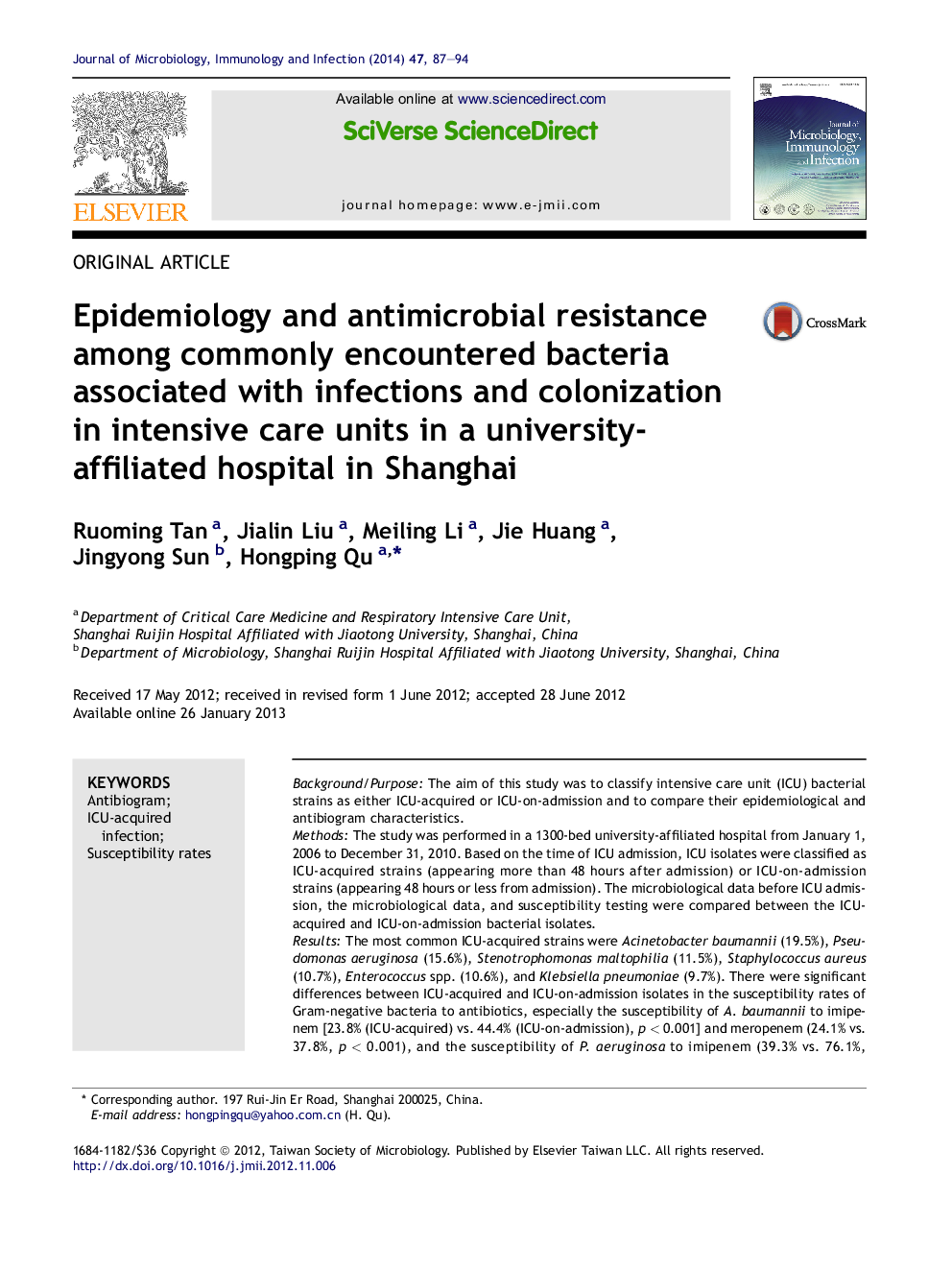| کد مقاله | کد نشریه | سال انتشار | مقاله انگلیسی | نسخه تمام متن |
|---|---|---|---|---|
| 3378218 | 1220071 | 2014 | 8 صفحه PDF | دانلود رایگان |
Background/PurposeThe aim of this study was to classify intensive care unit (ICU) bacterial strains as either ICU-acquired or ICU-on-admission and to compare their epidemiological and antibiogram characteristics.MethodsThe study was performed in a 1300-bed university-affiliated hospital from January 1, 2006 to December 31, 2010. Based on the time of ICU admission, ICU isolates were classified as ICU-acquired strains (appearing more than 48 hours after admission) or ICU-on-admission strains (appearing 48 hours or less from admission). The microbiological data before ICU admission, the microbiological data, and susceptibility testing were compared between the ICU-acquired and ICU-on-admission bacterial isolates.ResultsThe most common ICU-acquired strains were Acinetobacter baumannii (19.5%), Pseudomonas aeruginosa (15.6%), Stenotrophomonas maltophilia (11.5%), Staphylococcus aureus (10.7%), Enterococcus spp. (10.6%), and Klebsiella pneumoniae (9.7%). There were significant differences between ICU-acquired and ICU-on-admission isolates in the susceptibility rates of Gram-negative bacteria to antibiotics, especially the susceptibility of A. baumannii to imipenem [23.8% (ICU-acquired) vs. 44.4% (ICU-on-admission), p < 0.001] and meropenem (24.1% vs. 37.8%, p < 0.001), and the susceptibility of P. aeruginosa to imipenem (39.3% vs. 76.1%, p < 0.001) and meropenem (58.5% vs. 76.1%, p < 0.05). Furthermore, decreased susceptibility rates of A. baumannii and P. aeruginosa to carbapenems were correlated with an extended ICU stay (p < 0.05).ConclusionBecause of decreasing susceptibility rates of pathogens (especially ICU-acquired strains) and a significant correlation with the length of ICU stay, intensivists should consider a patient's time of ICU admission and previous microbiological data and should distinguish ICU-acquired strains from non-ICU-acquired strains so as to initiate optimized empirical antibiotic therapy against ICU-acquired infections.
Journal: Journal of Microbiology, Immunology and Infection - Volume 47, Issue 2, April 2014, Pages 87–94
